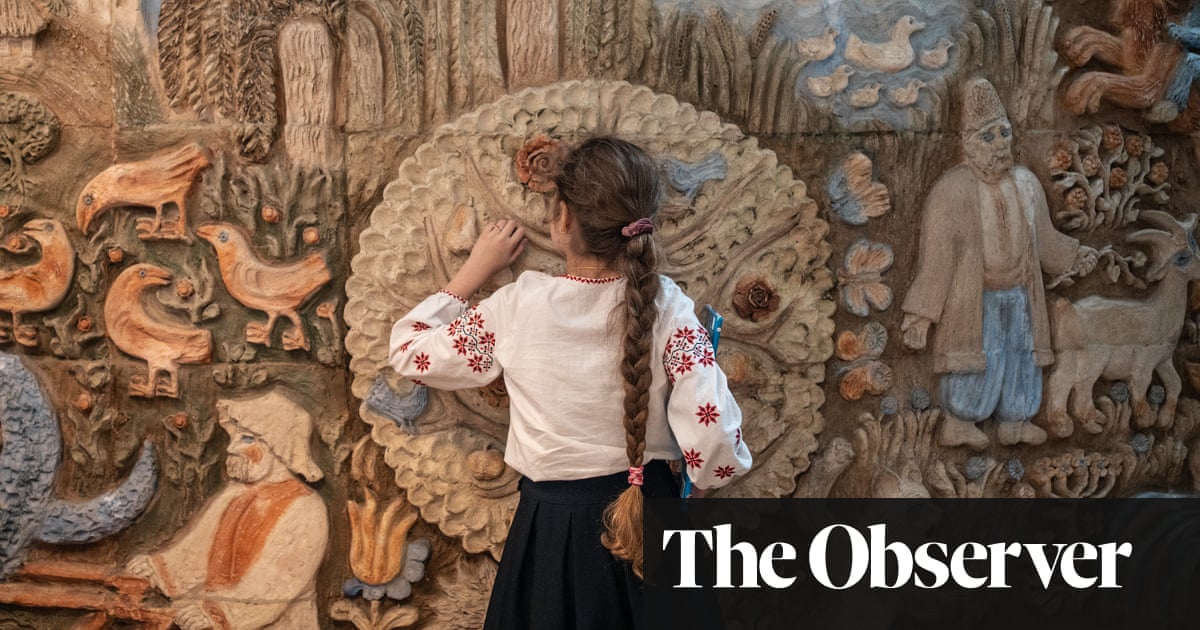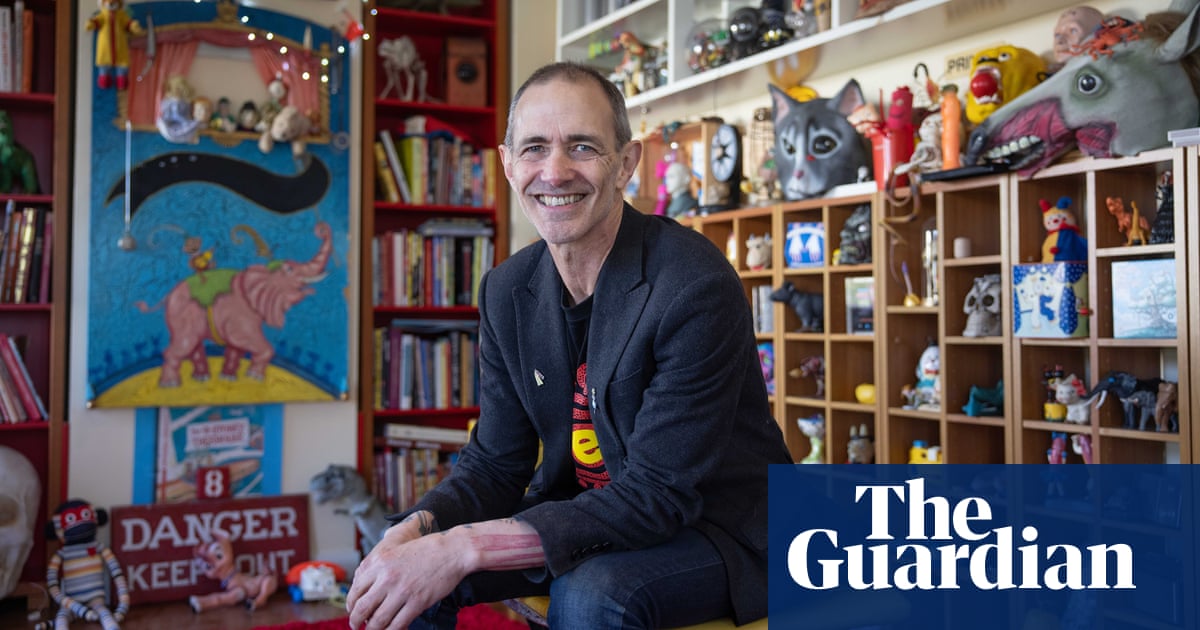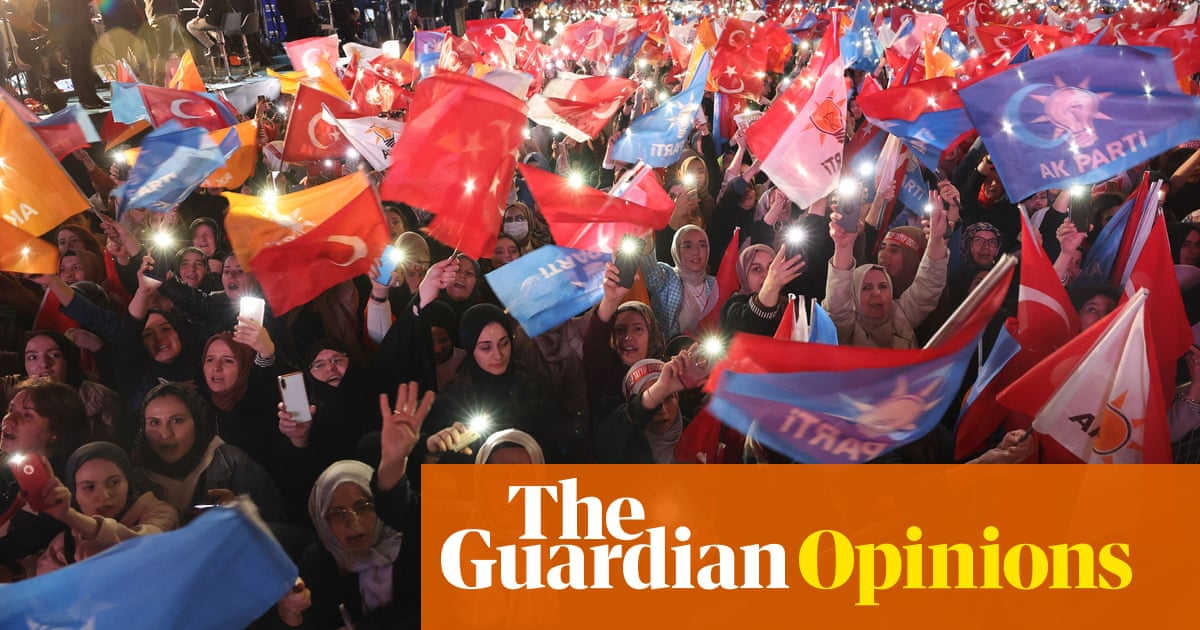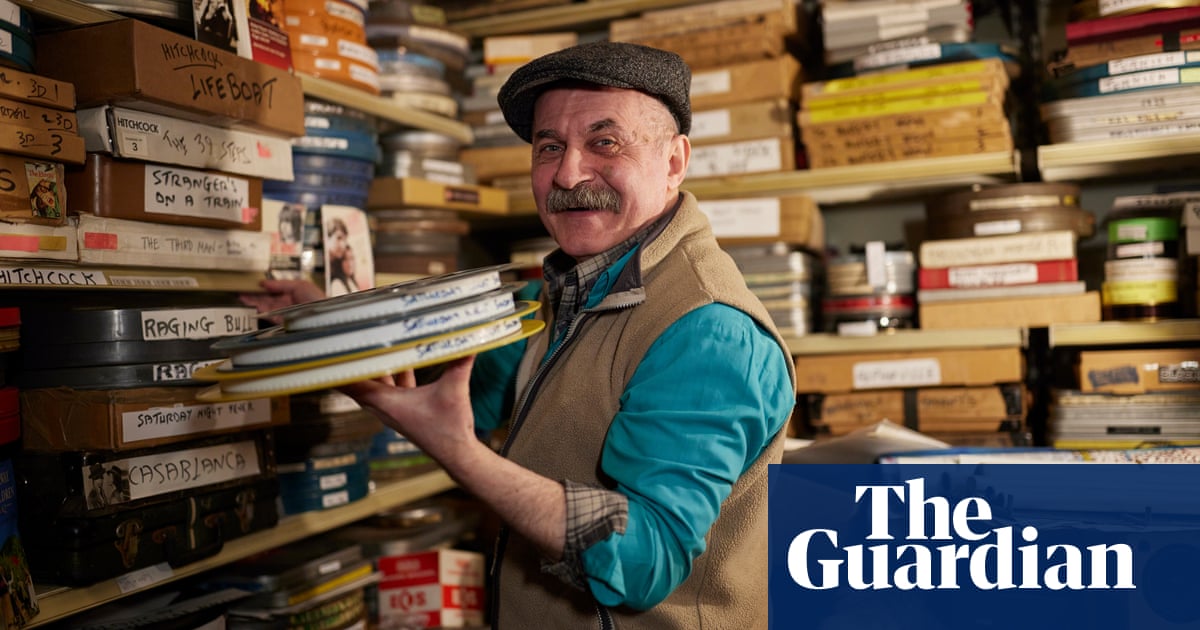
Author Robert Lawrence Stine was born in Columbus, Ohio in 1943. In 1978, he started writing humour books for children under the name Jovial Bob Stine before turning to horror. His phenomenally successful Goosebumps series was adapted for TV in the 90s and inspired two films in the 2010s. He has written more than 300 books, sold more than 400m copies and now his teen-oriented Fear Street series, about the lives of young people in the haunted town of Shadyside, has inspired a Netflix film trilogy set in three different times: 1994, 1978 and 1666.
How did the film trilogy come about?
The way all films get made, pretty much – they come to you and say: “We’d like to make a film.” It’s only been 30 years since Fear Street, so it didn’t take them so long. It’s always fun to see what other authors do with my work: they made up a 300-year history, going all the way back to colonial times. But it’s faithful to the feeling of the books, which are about a cursed place inside a very normal town.
How do these compare with the TV version of Goosebumps in the 90s?
Oh, these are much scarier. Nobody ever dies in Goosebumps, and a lot of people die in Fear Street. I killed off a lot of teenagers. And the films are scarier than the books.
I reread one of your Fear Street books and it addressed some quite serious issues: trauma, grief, loneliness, male rage…
Really? I’d have to reread that. I don’t try to put any messages in these books: the only lesson is to run. Adults have the right to read something just for fun, and I’ve always thought kids had the same right. Why can’t a kid just pick up a book and be entertained?
They also provide a safe way of thinking about danger and fear.
Yes. I was talking to a child psychologist in Los Angeles, and he had a patient, this young girl, who came in every week and just recited Fear Street plots to him. It was her way of dealing with her fears. For one thing, in these books there is always a happy ending. Once, just for my entertainment, I gave a book an unhappy ending: the nice innocent girl is taken away as a murderer and the murderer gets off scot-free. Kids hated this book. I started getting mail: “Dear RL Stine, you idiot. How could you do that?” I never did another – and I wrote a sequel to give it a happy ending.
Were you an anxious child growing up?
I was very shy and fearful and felt like a real outsider. My family was very poor: there were five of us, we lived in this tiny little house on the edge of a very wealthy suburban community in Ohio, three doors from the railroad tracks. I had a lot of fears. I would ride my bike around the neighbourhood in the evening and I always thought something was lurking in the garage. It was terrible, but of course later it was a great thing: I could think back to that feeling of panic and bring it to what I was writing.
How do you put yourself into the mindset of a child or a teenager when you’re writing?
I do a lot of spying. Luckily my son and his friends were the right age back in the day, and now my grandchildren and their friends, and my nephews – I have to keep up with them: their culture, what they wear, the way they talk. That’s the hard part of the job. Writing for kids, everyone says: “Oh, it must keep you young.”. That’s a total lie. It keeps you feeling really old.
Childhoods have changed quite a bit since you were growing up. Are kids still scared by the same things?
The technology has changed a lot. My granddaughter has an iPad – she is two years old and already knows how to drag and drop. But the fears never change: you’re still afraid of the dark, afraid of being in a strange place and not knowing how to get back. And kids are still reading – I’m very optimistic about that. When I started in children’s publishing back in 1970, it was a tiny business – no one was making movies of children’s books. The industry has grown so much.
Stephen King once accused you of using up every amusement park theme any writer could ever use…
The one time I ever met him, four or five years ago – he never leaves Maine – we had a nice talk. I said to him: “Steve, do you know that a magazine once called me a literary training bra for you?” And he said: “Yes, I know.” I’m a big fan. I think Pet Sematary is the scariest book he ever wrote. A really creepy idea, really well done. I think I’ve stolen that plot about five times.
Recently there have been a lot of films, such as Jordan Peele’s Get Out, that mix comedy and horror. Why do they work so well together?
Horror always makes me laugh – I never get scared at a movie or a scary book. Laughing and being scared, I think it’s the same visceral reaction. Talking about amusement parks: when you go up to the rollercoasters, what do you hear? You hear people laughing and screaming at the same time. It’s a very close connection. I use humour a lot: whenever I think a scene is getting too scary for younger kids I throw in something funny, so that it doesn’t become too intense.
Bandersnatch, the choose-your-own-adventure Black Mirror spin-off, reminded me of your Give Yourself Goosebumps books…
Yes, right, that one’s very clever. I love Black Mirror. I’m a big Twilight Zone fan, and this is like Twilight Zone for today. Back in the 90s, there were a lot of series like that: I went years without ever writing a book with a beginning, middle and end – they all had like 25 endings.
What did you make of Jack Black’s impersonation of you in the Goosebumps films?
Oh, I love Jack. He was too mean, I thought – in the film he throws away a kid’s cellphone. But he’s a riot. He flew into New York to meet me in a blizzard; we had lunch together and he kept looking at me. And he said: “Bob, I’m gonna play a sinister version of you.” And that’s what he did. For some reason when they started filming he suddenly had an Orson Welles accent – I don’t talk like that, but I thought he was hilarious.
What has the experience of the pandemic been like for you?
For a writer, it’s not much of a lifestyle change: I’m used to being indoors all day, writing. But it was hard. It was very depressing to be in New York; everything was closed, I didn’t see people for a year. I was lucky my son and his family also lived on the Upper West Side, so I got to see the grandkids a lot – that was a big help. I’m out in Long Island now, in our summerhouse, and everyone’s just thrown away their masks – it’s very refreshing.
What culture did you enjoy in lockdown?
That’s all everyone talks about: what they watch on Netflix. One of the worst parts of the pandemic – aside from people dying, of course – is that no one has any anecdotes. You call people up, no one has any news. I’ve never watched so much television in my life. I mean, we’re in New York City, we go to the theatre, we go to the ballet. But that’s all gone. When you’re a horror writer, people don’t like to hear that you like opera or ballet. People think your whole life is horror. If I say: “Well, I’m a big country music fan,” they say: “No, no, you can’t. What’s your favourite scary movie?”
A lot of your readers are grownups now – what kind of things do they tell you about what your work has meant to them?
It took a long time to get used to being nostalgia: that was hard to take for a while. I’d do book signings: seven-year-olds came, and 10-year-olds, then 30-year-olds, and 35-year-olds. But I got to really like it. I get such wonderful messages from people saying: “I wouldn’t be a writer today if it wasn’t for you”, “Thank you for getting me through a hard childhood.” It’s great for my ego.
What are you most afraid of?
I don’t have a good answer for that, do you believe it? Just normal, human fears. I’m sorry I don’t have a better answer – I really should after all this time.












